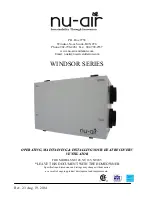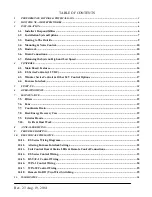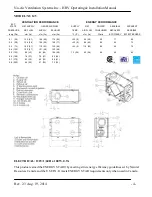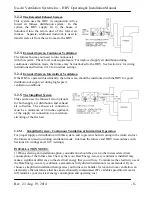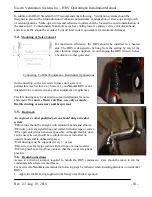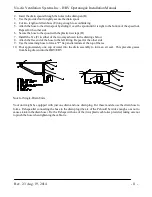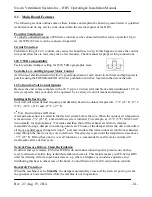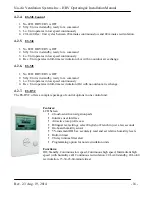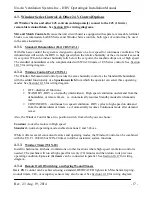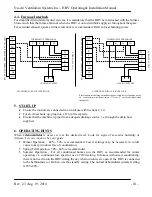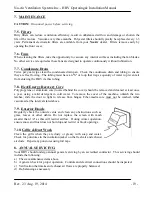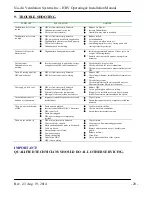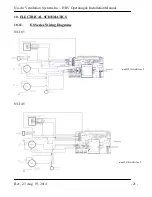
Nu-Air Ventilation Systems Inc. - HRV Operating & Installation Manual
Rev. 2.3 Aug. 19, 2014
- 6 -
2.
HOW THE NU-AIR SYSTEM WORKS
A.
Powerful, centrifugal
blowers bring fresh air into
your home while an equal
amount of stale, humid air is
exhausted to the outside.
This is
NU-AIR
’s balanced
central ventilation system.
B.
Incoming fresh air is filtered
before flowing through the
heat exchange core.
C.
Stale, humid air flows
through the cross-flow heat
exchanger and transfers the
heat to the incoming fresh
air.
D.
Warm fresh air is distributed to each room of the house through an independent ductwork system.
3.
INSTALLATION
3.0.1.
Installation Supplies, Standard Issue Items:
The HRV comes equipped with:
Filters
Anti-Vibration Straps
Heat Recovery Core
Drain Hose Assembly
Balancing dampers are NOT REQUIRED. Windsor Series HRVs from Nu-Air are equipped with
a system which allows the installer to adjust each motor in both high and low speed.
Removable terminal blocks for timers, remote controls, furnace interlock. A 4-wire terminal
block for 12 VDC ES Series controls and a 10-wire terminal block for 24 V controls are provided
with the unit. To use these, gently remove the block from the HRV, fit the wire into place and secure
it in its trap, using a fine-tipped flat-headed screwdriver.
3.1.
Installer's Responsibilities
Installers are responsible for the performance of the ventilation system and for ensuring that all codes
and standards are met.
Do not mount the fresh air supply near a source of contaminated air such as automotive exhaust, gas
or propane exhaust, garbage containers or oil tanks.
Do not connect a dryer exhaust to an HRV.
Combustion appliances such as furnaces and hot water heaters must not draw combustion air directly
from an HRV.
Do not connect a kitchen range hood to any part of this system.
Do not install in attics or other unconditioned spaces (min. 16º C).
Do not install in enclosed garages.
Try to maintain straight duct runs as much as possible, using as few joint fittings as possible.

